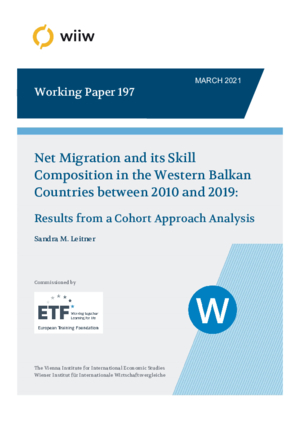Net Migration and its Skill Composition in the Western Balkan Countries between 2010 and 2019: Results from a Cohort Approach Analysis
wiiw Working Paper No. 197, March 2021
55 pages including 5 Tables and 15 Figures
In view of the scarcity of reliable and detailed data on migration this paper develops the novel cohort approach, which allows us to deduce from annual Labour Force Surveys (LFS) the extent and skill composition of net migration. It is based on representative age cohorts who are followed over time and whose change in size and composition provides information about the extent and skill composition of net migration. As concerns skill composition, the analysis differentiates between four educational levels (Low, Medium-general, Medium-VET and High). The analysis is applied to the six Western Balkan countries (for the period 2010-2019), which lack official, comprehensive and domestic migration statistics, particularly in terms of the skill composition of migrants. The analysis shows that during the period analysed all six Western Balkan countries experienced net emigration which, however, differs across countries in terms of magnitude and particular age pattern. A further breakdown of net migration by highest level of education shows that net emigration in the region mainly occurs among the medium- and low-educated. Contrary to widespread perception, the analysis finds evidence of brain gain in terms of partly substantial net immigration of the highly educated in all countries except Albania, Bosnia and Herzegovina and Kosovo. Brain gain is highest among those in their early to mid-20s to early 30s. As this is the age at which students usually complete tertiary education, this is likely to be related to students returning to their home countries after graduating from tertiary education abroad.
Keywords: Net-migration, skill composition, Western Balkans, cohort approach
JEL classification: J61, J24
Countries covered: Western Balkans
Research Areas: Labour, Migration and Income Distribution
